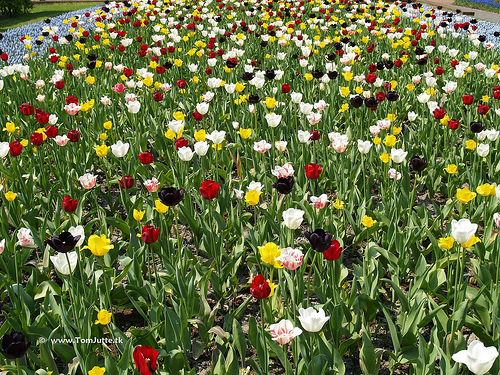About two years ago, my students and I sat around the room brainstorming what people sought when they read about New Orleans culture. Our resource was interviews we had done with community residents, young and old. Voices, was the consensus theme. “I like knowing what other people experience, even if it’s not my own,” said one of our wise informants.
This core insight drove the human-centered design of ViaNolaVie.org, an online platform for cultural journalism and voice-driven stories. Nine months after our launch, we keep refining the way the platform engages with participants: writers and readers, students and teachers, citizen journalists and activist artists. Making a space, even digital, for so many voices is more like tending a garden overgrown than keeping a house tidy.
This year on my sabbatical in the Netherlands I’ve been particularly inspired by two similar efforts to cultivate community voices and grow a noncommercial space to collect their bounty.
Samen in Beeld (roughly, Together on Screen) is a social innovation project located in Northeast corner of the country, in a place often mischaracterized as the margins. Housed in a senior care facility, SiB began when the mother of Project Manager Ina Spijk confessed she was lonely in her care facility.
“Social isolation is a big problem for the elderly,” said Business Manager Caren van de Wal. In addition to being physically separated from town life, emotional contact is limited. “People tend to ask you about your medicines and your body functions, but no one asks you your story.” SiB thus created a way to bring the residents in closer contact with the world beyond the home through digital storytelling.
From coverage of the local carnival to sharing a family recipe, SiB produces and posts weekly stories with seniors at the center. “We bring people outdoors to events and museums, places where they can tell their stories,” said van der Wal. Often the connection between the story and the event is mutually reinforcing. “We had a bus driver who told us he absolutely did not want to drive a bus again. But then we brought him to the transportation museum, and without any prompting, he jumped in the driver’s seat and started it up like it was second nature.”
While the project brings the elderly physically outdoors – to local farms and festivals, for example – the stories that the elderly tell bring the community into their world. This is important because “these people have lived a full life, and they often have a lot to say.” Adults learn new things about an elder generation of residents (they recognize them in the grocery store now) and younger people learn “that milk doesn’t come from a factory.”
The challenge is sustainability. Like ViaNolaVie, SiB applies for grants and solicits the energies of volunteers. In the long run, however, social innovations must become entrepreneurial. Independence and creativity must be somehow rendered into paying the rent, or, in our case, the writers.

Tulip time in the Netherlands makes me rethink hybrids for journalistic sustainability. Creative Commons, Some rights reserved by HereIsTom.
The locally penned, ad-free journalism site de Correspondent has basically solved that nonprofit payment puzzle through reader subscriptions, community partners, and engagement events to bring producers and audiences together. Their manifesto inspires us to figure out how we are “symbolic shareholders” in sharing the deep contexts for news stories that impact the community.
Stories on the site while I’m writing include a health science professor who spent 72 hours in the local nursing home, a reflection on overwork and burn-out, and a review of Zadie Smith for a Dutch audience. I can read the stories for free, but over 60,000 members pay about $10 a month to read, write, and comment. Add to that paid community events, books, and some local subsidies, and the organization can pay living wages to editors, production staff, and (OMG it’s possible) contributors!
Engagement editor Jessica Best explained the key is that everyone can participate in the site in ways that feel meaningful to them. “Writers make up their own beats based on what motivates them, and then they guide a conversation online that avoids trolling or uncivil behaviors,” said Best.
That sounds ideal to me. How many of us think a curated space for independent and creative voices is worth a muffin and a mocha once a month? Who wants to help foster each other’s ability to experience new perspectives on local culture and life in New Orleans? What will it take to tend our garden together and celebrate in its messy overgrowth? Perhaps we can seed some of these Dutch ideas for our own local hybrids.
 NOLAbeings Multimedia artist Claire Bangser created NOLAbeings as a portrait-based story project that marries...
NOLAbeings Multimedia artist Claire Bangser created NOLAbeings as a portrait-based story project that marries...  Voodoo in New Orleans: Reviving history: New Orleans fortune telling This article takes a deep dive into the history of Voodoo in New Orleans, its hybridization with Catholicism, and its present-day place in the city's culture. The author visits fortune-tellers in the French Quarter, using their guidance as a tool for introspection rather than a deterministic predictor of the future. Through her experiences in New Orleans, the author feels a mystical connection to both the past and the future.
Voodoo in New Orleans: Reviving history: New Orleans fortune telling This article takes a deep dive into the history of Voodoo in New Orleans, its hybridization with Catholicism, and its present-day place in the city's culture. The author visits fortune-tellers in the French Quarter, using their guidance as a tool for introspection rather than a deterministic predictor of the future. Through her experiences in New Orleans, the author feels a mystical connection to both the past and the future. 